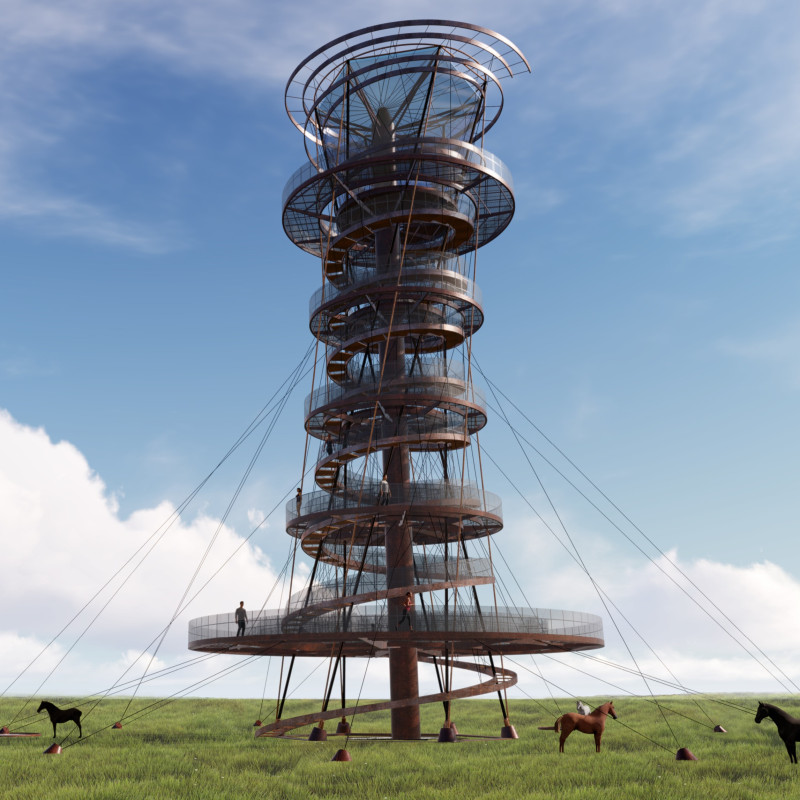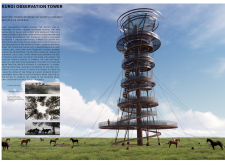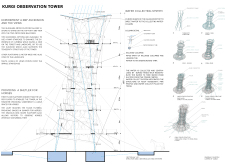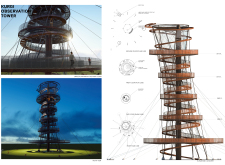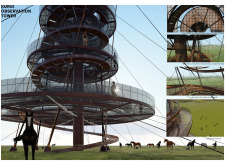5 key facts about this project
The Kurgi Observation Tower is located within the North Vidzeme Biosphere Reserve, designed to complement the surrounding swamp and forest landscapes. It serves as a viewpoint for visitors and a shelter for horses, highlighting a connection between the built environment and nature. The design aims to reflect the characteristics of large trees, creating a structure that fits well within its setting while offering functional spaces for both humans and animals.
Materials and Construction
The tower features a lightweight Corten steel structure, known for its durability and weather resistance. Over time, it develops a natural patina that helps it blend into the environment. The design uses a tensegrity construction method, where the balance of tension and compression creates a stable form with less material. This approach not only enhances strength but also results in a visually striking presence that feels both lightweight and substantial.
Water-Collecting System
A key aspect of the design is the water-collecting system integrated into the structure. Rainwater is captured and channeled into an underground reservoir. From there, it is distributed to a pond that supports local plant life. This system reflects a commitment to sustainability, showing how design can enhance environmental function. The tower does more than provide views; it actively contributes to the health of the surrounding ecosystem.
Visitor Experience and Accessibility
Visitors experience the tower through tiered platforms that allow for observation while offering shaded areas for horses below. The first platform is wider, promoting stability and creating an inviting space. Access is facilitated either via a ramp staircase or an elevator. This dual approach ensures everyone can reach the observation area, enhancing the engagement with the natural surroundings.
Spatial Dynamics
The circular design permits a 360-degree view, encouraging visitors to appreciate the diversity of the biosphere reserve. Daylight filters through the structure, creating changing patterns of light and shadow that enrich the spatial experience. The design fosters a connection between visitors and nature, reflecting an intention to blend human activity with the landscape in a meaningful way.


